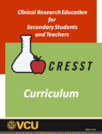
This is the first part of the Clinical Research Education for Secondary Students and Teachers.
- Subject:
- Research
- Material Type:
- Lesson Plan
- Author:
- Dr. Lisa Abrams
- Date Added:
- 07/22/2023

Resources that support the Science Standards of Learning - 6th Grade

This is the first part of the Clinical Research Education for Secondary Students and Teachers.
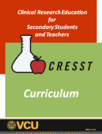
This is the second paft of the Clinical Research Education for Secondary Students and Teachers.
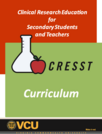
This is third part of the Clinical Research Education for Secondary Students and Teachers CRESST Curriculum.
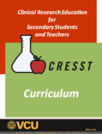
This is the fourth part of the Clinical Researcg Education for Secondary Students and Teachers.

This short and sweet 5E lesson helps students explain the role of gravity in the formation of the solar system and in orbital motion (6.2c).

This 5E lesson begins with an Engage activity that assesses prior knowledge of water cycle from elementary school. It is followed by an Explore activity where students observe a teacher demonstrating the water cycle in a bowl and gather information based on their observations. It continues with an Explain where students have the opportunity to explain what they understand on the water cycle with an emphasis of phase changes. In the evaluate stage, students apply their knowledge of solids and liquids to classfiy various forms of precipitation. .

The space industry has been creating innovative technologies for decades. Students in this lesson will explore the world of space technologies and how they play a role in our everyday life.

This page recognizes the many individuals and organizations for their contributions to this grant effort awarded to the VCU School of Education Center for Innovation in STEM Education from the National Oceanic and Atmospheric Administration Bay Watershed Education and Training (BWET). We hope you take a moment to review this page and share our appreciation of these individuals, and the organizations they represent!

Learn what happens when an animal is rehabilitated and returned to the wild. In many cases, we may never know, but there are a few ways post-release data can be gathered on former patients. This insight not only can prove that wildlife rehabilitation works, but post-release data can also contribute important information about overall wildlife populations. In this episode, join Center staff and wildlife researchers as they reflect on what some former wildlife patients have taught us.
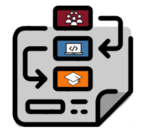
The goal of this activity is to build critical thinking skills and excitement for Computer Science / Computational Thinking, while laying a foundation of fundamental programming concepts. By scaffolding basic concepts like sequencing and algorithms in an unplugged activity, students who are intimidated by computers can still build a foundation of understanding. In this lesson, students will learn how to develop an algorithm and encode it into a program.By "programming" one another to draw pictures, students experience some of the core concepts of programming in a fun and accessible way. The class will start by having students view a video of a simple program demonstrating how to develop instructions for building a peanut butter and jelly sandwich. Students will start with simple shapes, and progress to the coding of a specific drawing that other students will then try to replicate (“running the program”). If there is a desire to have a more of a Math slant on the lesson, the drawing could take place on graph paper. Students would then use the coordinates to complete the drawing.
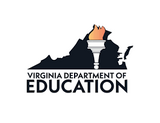
Science Instructional Plans (SIPs) help teachers align instruction with the Science Standards of Learning (SOL) by providing examples of how the content and the scientific and engineering practices found in the SOL and curriculum framework can be presented to students in the classroom.
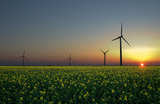
Students are asked to review a variety of resources to learn about renewable energy then create a Google Slides presentation on the six main renewable energy resources (solar energy, wind energy, bioenergy, hydropower, geothermal, and hydrogen).
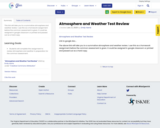
This link will take you to a summative atmosphere and weather review. I use this as a homework assignment before the common assessment is given. It could be assigned in google classroom or printed and passed out as a hard copy.

This link will take you to a summative atmosphere and weather review. I use this as a homework assignment before the common assessment is given. It could be assigned in google classroom or printed and passed out as a hard copy.
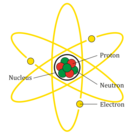
This resource is designed to accompany students notes, texts, and other instructional resources and provide a means to review what they have learned about atomic structure and counting atoms in compounds.
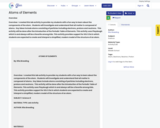
Overview: I created this lab activity to provide my students with a fun way to learn about the components of the atom. Students will investigate and understand that all matter is composed of atoms. Key ideas include atoms consisting of particles including electrons, protons and neutrons. This activity will be done after the introduction of the Periodic Table of Elements. This activity uses Playdough which is and always will be a favorite among kids. This activity provides support for SOL 6.5a in which students are expected to create and interpret a simplified, modern model of the structure of an atom.

Learn how to set up a safe backyard habitat, including the critical components to make your yard a sanctuary for wild animals. Join Wildlife Center staff and backyard naturalists to learn how we can create safe spaces to attract wildlife while minimizing our impact and chance of disturbance for our wild neighbors.

Learn about migration, the seasonal movement of animals from one location to another. Join the Center staff and migratory bird experts as they explain why birds migrate, and the dangers that they may face along their journeys. Learn how to help migrating birds and why we should be concerned about more than just our own backyards.

Learn the reasons why keeping cats—domestic pets—indoors is better for wildlife, the cats themselves, and human health. Outdoor cats cause significant problems for wildlife and the environment; these cats also have shorter lifespans and are subjected to many more dangers than their indoor counterparts. Join Center staff, health experts, and a cat behaviorist to learn how we can fix this human-caused issue and keep wildlife, cats, and the environment safer.

Students break apart cell phones to determine what elements are located in cell phones. They then use the elements to determine how the flow of electrons works in the cell phone. Lastly, create designs using legos to practice engineering practices that would be common in engineering.